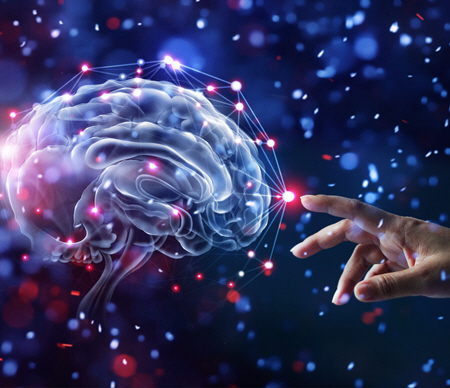 When Memories Stick
When Memories Stick
When confronted with particular events, you may experience a visceral emotional response, and those feelings might “stick” with you.
While you may welcome some of those emotions – the joyful ones – you might have difficulty getting rid of others.
Instead, they become burdensome and show up as distressing dreams, over-reactions to things in the here and now, and negative self-beliefs.
Take Kendra,* for example.
Kendra had been in traditional talk therapy for a few years, but she felt her growth had stagnated. She suffered from low self-esteem and self-criticism from being sexually assaulted when she was younger.
This traumatic event led her to turn to unhealthy relationships and unhealthy eating behaviors to make herself feel better.
In traditional talk therapy, Kendra had talked about her feelings and tried different ways to change the way she thought and felt about herself – but had seen little improvement. She wanted to make positive changes but didn’t know how.
Or how about Brianna*?
She suffered from headaches, difficulty falling asleep, and nose bleeds before large social events and school exams.
A self-proclaimed “perfectionist,” she frequently lashed out at her friends and family when she turned in a less than stellar performance in her soccer games or academics. Afterward, calming down often took hours.
Not knowing any better, Brianna blamed herself – thinking she was just born this way.
 But both found relief – with EMDR.
But both found relief – with EMDR.
Kendra’s self-worth began to transform and heal. Throughout her EMDR therapy, we uncovered and reprocessed memories that reinforced her self-criticism, allowing HER to feel in control.
Kendra learned to let go of her connection to the unwanted feelings and create new meaning and perspective from her memories. Because of her inner transformation, her relationships and coping skills improved, too.
Brianna was relieved to discover that specific experiences in her life had reinforced her “perfectionism” and that she wasn’t “born that way.” Using EMDR therapy to reprocess those memories, her headaches and nose bleeds became less and less frequent.
Her family and friends noticed she didn’t lash out often anymore, and she could sit and focus on her exams (even earning high scores) without panicking and crying.
I even noticed Brianna appeared more relaxed and laughed more often in our sessions together.
*Names changed to protect client confidentiality.
What is EMDR therapy?
EMDR stands for Eye Movement Desensitization Reprocessing.
“What does that even mean?” you ask.
Simply put, it means that we use touch, sight, or sound to stimulate both sides of your brain. The fancy term for it is “bilateral stimulation” because we activate both the brain’s left and right sides.
While we do that, your mind intermittently recalls traumatic memories. We separate the negative feelings from the memories and allow your brain to reprocess them.
Afterward, you can access those memories without feeling overwhelmed or reacting as if trapped in the past.
So, how about you?
What feelings and memories have you feeling frozen?
Are you ready to break the paralytic cycle and regain control of your life?
Call me today to see if EMDR can help you. (310) 567-4878


